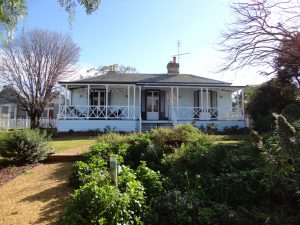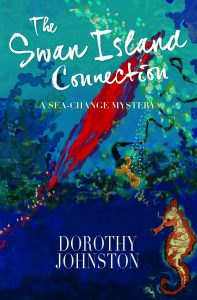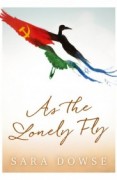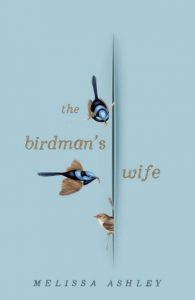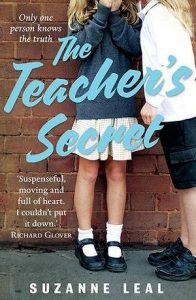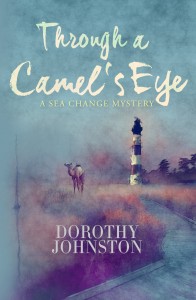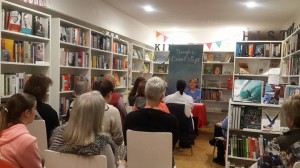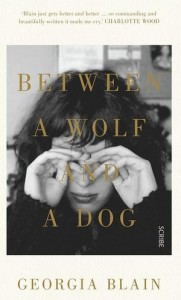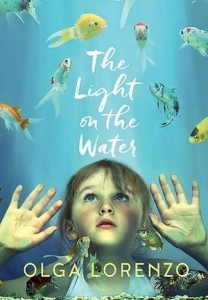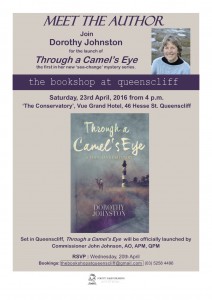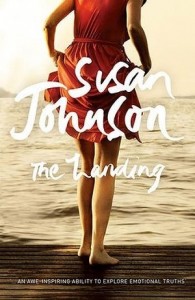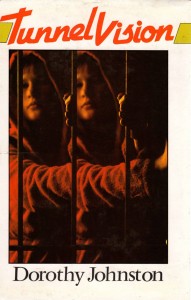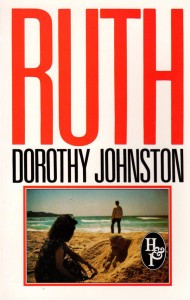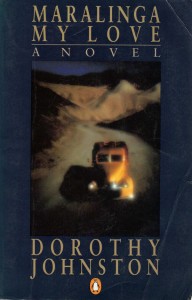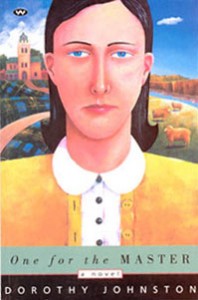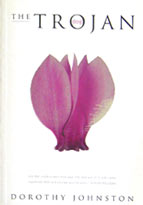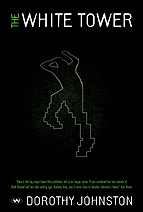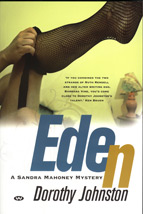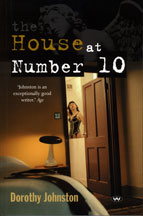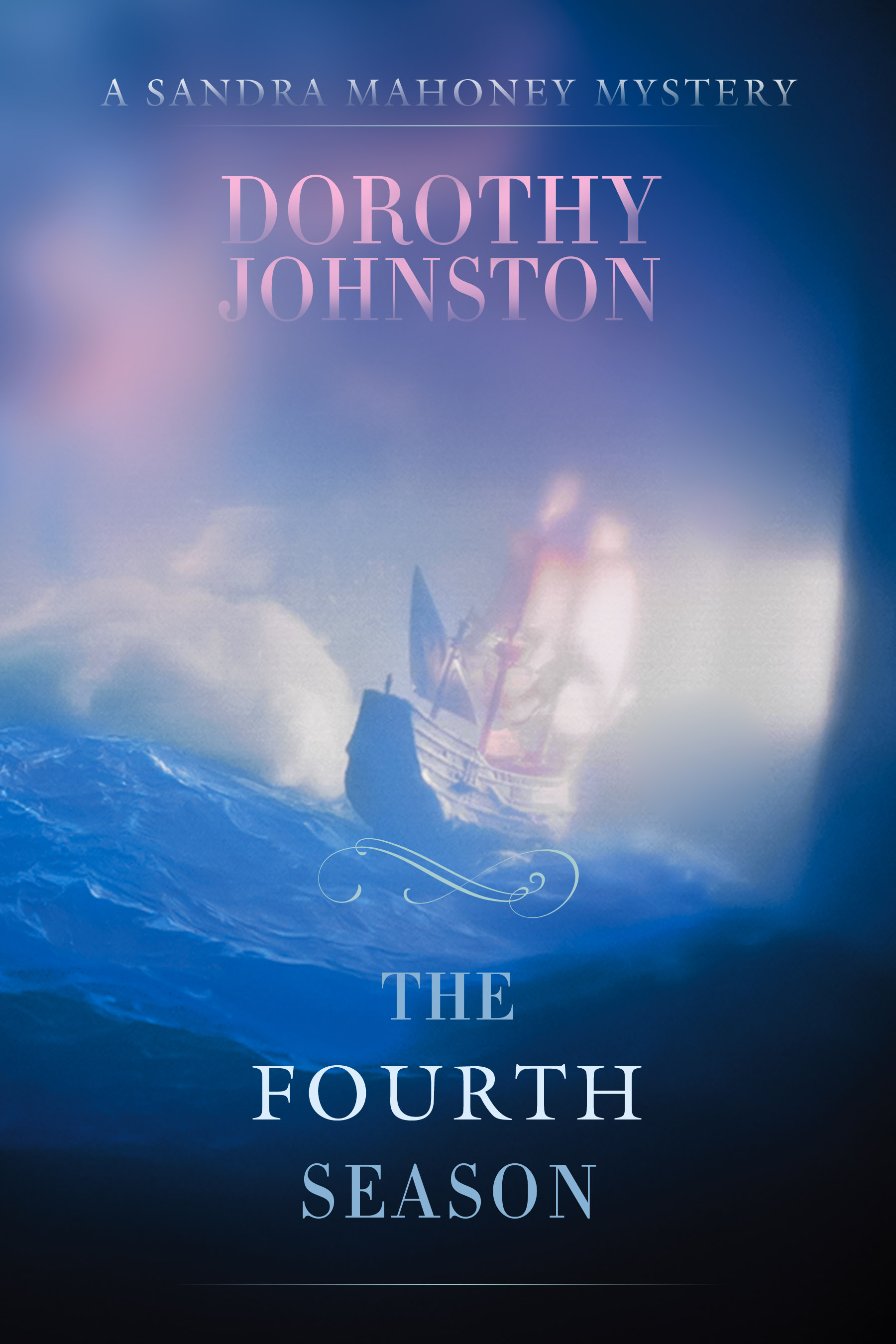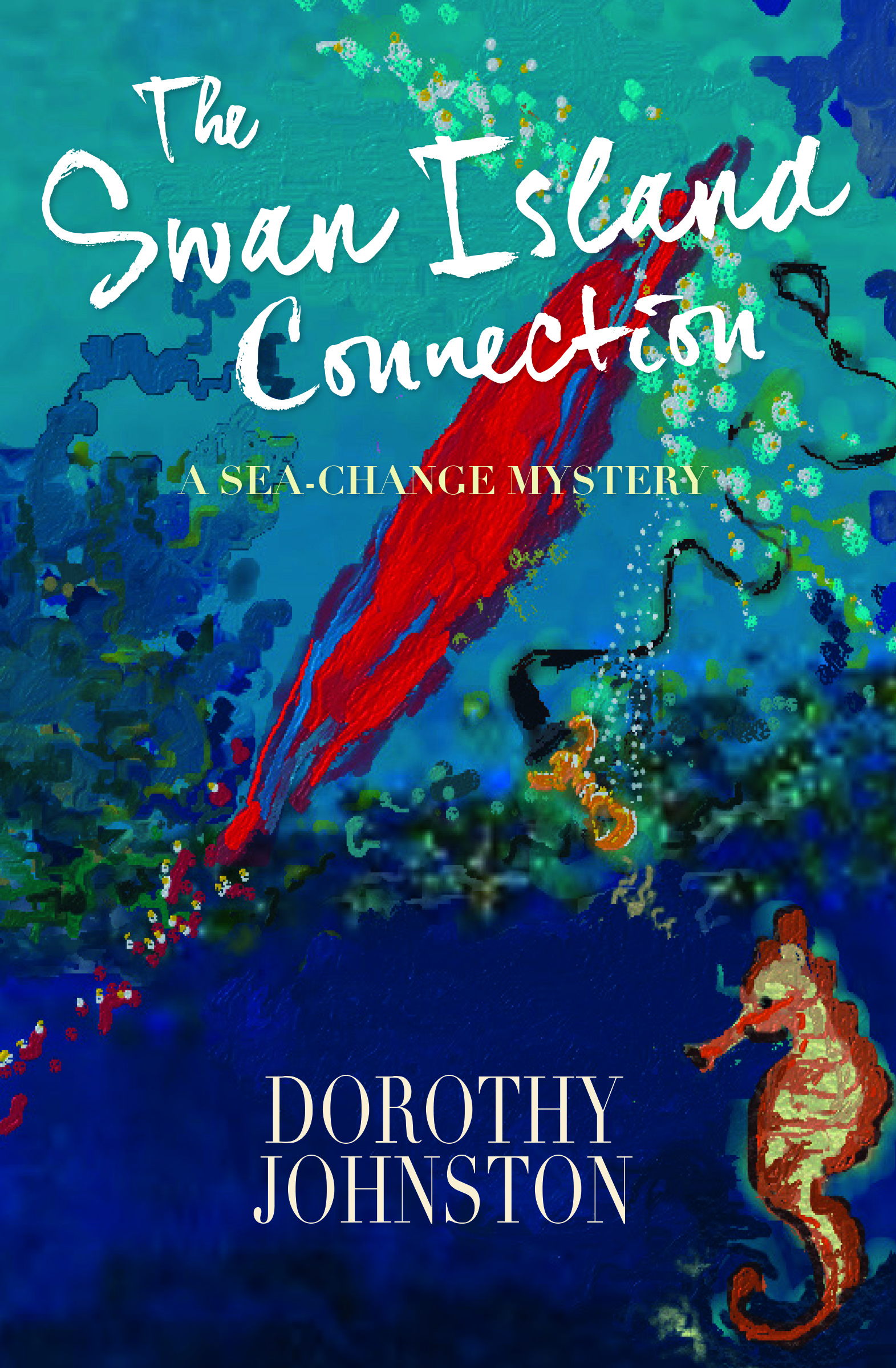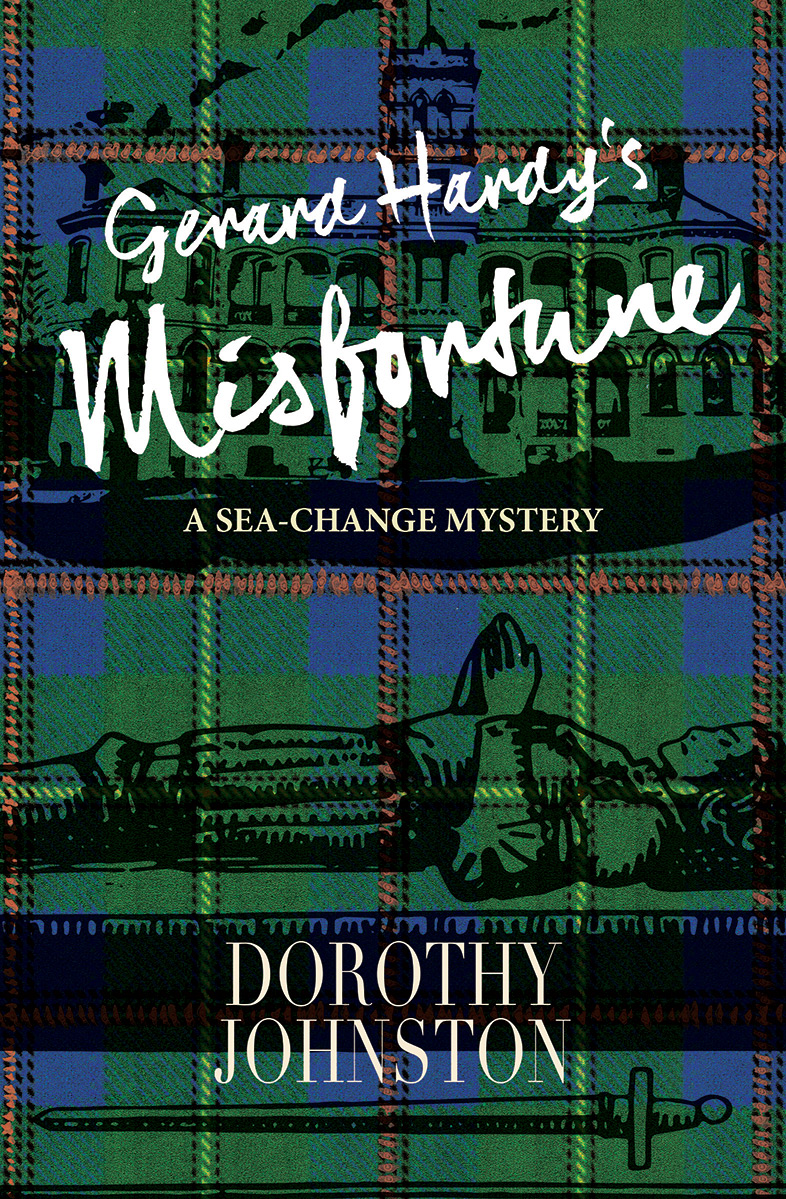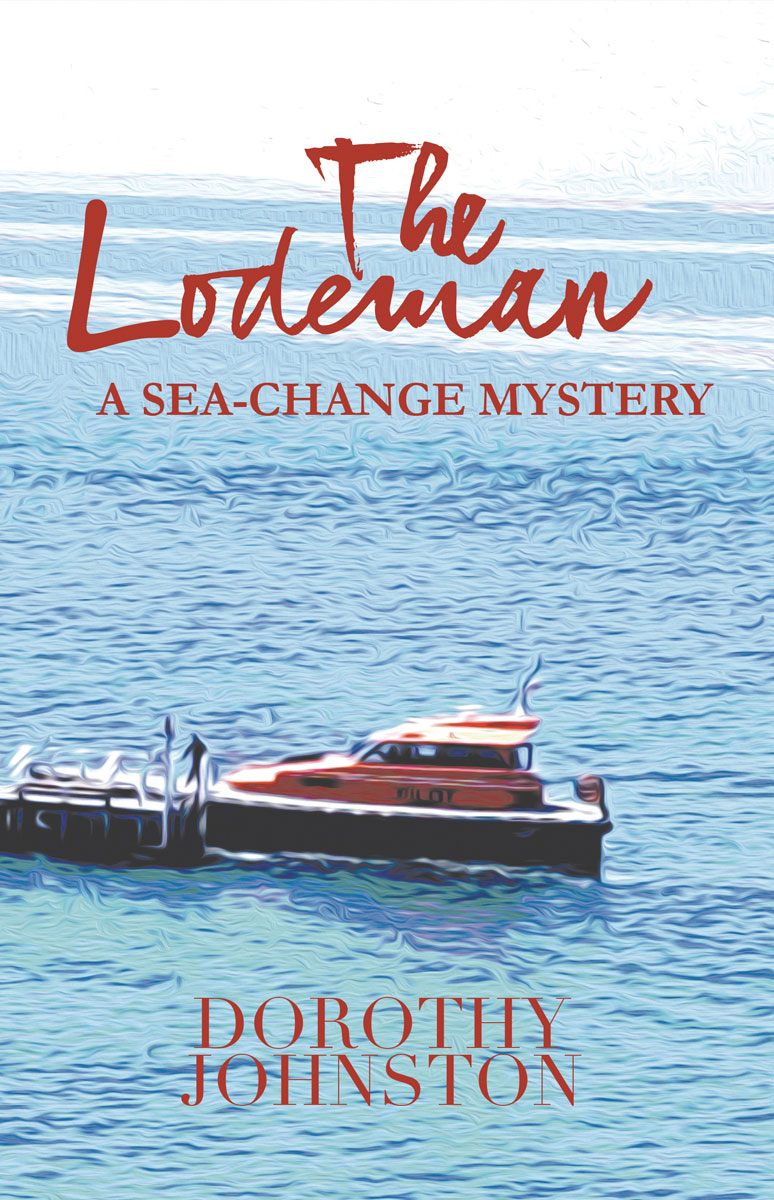Some time back I wrote a post on ghosts at the Royal Hotel in Queenscliff.
At last the long process of writing and editing my novel about a murder in the basement of the Royal is coming to an end. I’m involved in discussions about the cover, which will be designed by the incomparable John Cozzi, who created the cover for the second book in my sea-change mystery series, The Swan Island Connection. I’ve just sent John some photos of the haunted old hotel.
Reading through my manuscript for the last time, I was surprised by the importance of ghosts. That sometimes happens to a fiction writer; she’s busy focussing on one theme or another, then goes back to the story and finds that something else has been important all along.
Brigid Magner is a literary scholar and lecturer at RMIT. Speaking about her research on literary tourism, Brigid makes the point that houses where famous writers have lived are often felt to be haunted.
“But the term ‘haunted’ does not always refer to ghosts as such. It can also refer to a ‘haunted’ state which can either be a pleasant communion with a bygone spirit, or it might entail distress and anxiety. It can also refer to the old ‘haunts’ of notable individuals.”
In my story, the young man killed in the Royal’s basement was a Henry Handel Richardson scholar, visiting Queenscliff for a tarot reading which he hoped would connect him to the spirit of his heroine.
In the 1870s, the child who was to become Henry Handel Richardson lived with her family at 26 Mercer Street, just a hop, step and jump from the Royal. No one has seen or heard or felt a ghost at 26 Mercer Street so far as I’m aware, but the Royal is reputed to be haunted from its basement to the top of its tower. Built in the 1850s, it was Queenscliff’s first morgue.
Ethel Richardson – or Ettie as she was known when she was a small girl – believed the spirits of the dead could communicate with living human beings, as did her father, Walter and her sister Lil. Ethel maintained this belief to the end of her life, though she was secretive about it.
I thought of all of this as background to a murder mystery, but then somehow it became more than background. Not that my main characters believe in ghosts or spirits; they don’t. But they are influenced by them nonetheless.
One suspect sees visions and has done since her childhood. Chris, my police constable, is sympathetic, but wary at the same time. Then one night he ‘sees’ Mary Richardson, Ethel’s mother, hurrying home from the fort where she has been struggling to learn book-keeping and Morse code so she can support her daughters.
Chris, who has always admired Mary, is moved and shocked.
I guess is that, looking back at the novel now that it is finished, I realise there’s a thin membrane, a kind of gauzy veil, separating my policeman and woman from the characters they are investigating. There aren’t two sides of the fence; there’s no black and white. This blurring of boundaries interests me. I hope it will interest readers too.
A few weeks ago I was contacted by Brigid Magner, a lecturer at RMIT who described her current project about literary commemorations in Australia. This project includes several houses where Henry Handel Richardson (Ethel, or Ettie as she was called when she was a young girl) once lived.
The two photographs at the start of this post are of 26 Mercer Street Queenscliff where the author lived in the late 1870s. The second is from a short play I wrote for history week 2016, and shows Ettie (played by Laura McMahon) reading on the veranda. The play took place in the garden, where the audience sat, and on the spacious veranda.
Talking to Brigid and thinking about her project got me wondering about literary pilgrimages and why people travel long distances to visit the homes of their favourite authors.
At the start of Flaubert’s Parrot, author Julian Barnes has his narrator ask, ‘Why does the writing make us chase the writer? Why can’t we leave well alone? Why aren’t the books enough?’
I sometimes fantasise about visiting Shrewsbury in England, where Ellis Peters set her Cadfael series. Cadfael is a Benedictine monk who lived at the Abbey of St Peter and St Paul in the 12th century. I imagine the cobbled streets and tiny, close-packed houses. And there would be some corners of the city where my imagination wouldn’t feel let down. But mostly I would have to go about in blinkers. And this is one problem, isn’t it, for literary pilgrims, that places where well-loved authors and characters have lived exist so vividly in our imaginations that we must be letting something go when we travel, perhaps thousands of kilometres, to see them with our own eyes.
One of my favourite pilgrimage stories concerns Mikhail Bulgakov’s The Master and Margarita, a novel combining a wonderful mixture of naturalistic and allegorical writing, in which the devil visits Moscow. There is supposed to be a tour where the tour guide takes visitors to see the bench the devil sat on. Now I don’t know whether or not this story is true; it’s simply one of many legends surrounding a famous work of literature. And I don’t care if it’s true, though if I were seriously considering paying for a tour I suppose I would like to find out. I love the story because it’s a mixture of imagination, humour, and the desire to connect with works of fiction that have moved and changed us.
I do not have to go far to visit one of the childhood homes of Henry Handel Richardson.
I can’t get inside 26 Mercer Street since the house is privately owned and not open to the public. I did go inside once, as a special favour, and was disappointed by the modern renovations. The front garden, though, is recognisably what it would have been in the 1870s, when the Richardson family lived there for about eighteen months. Such a short time, at least from an adult perspective. So much happened!
My script for the play features Ettie and her younger sister, Lil, left alone in the house to mind their father, while their mother, Mary, was learning book-keeping and Morse code at the post office. Mary had been told that if she could complete her training in six months she’d be given a job as a postmistress. She had to do something to support herself and the girls since Walter was incapable of doing so.
When the Richardsons arrived in Queenscliff, Walter was still talking about working as a quarantine officer and developing a private medical practice, but it quickly became apparent that he could do neither. Those eighteen months witnessed the rapid decline that ended with him being committed to a Melbourne mental asylum.
From Mercer Street, Walter wandered off and got lost, fell into vociferous arguments with shop-keepers and people in the street, had to be fetched home by his elder daughter, then aged eight years old.
All of this made Ettie furious. She compensated by finding ways to live in her imagination.
I like to walk up and down Mercer Street, paying tribute silently, anonymously. I’m not sure what kind of tribute I’m paying exactly, but that doesn’t matter. The house has always seemed to me a heart of darkness. Even on sunny days it seems surrounded by a cloud of dread. But then there’s Mary’s practical good sense and determination, Mary hurrying home in the dusk, a little figure dressed in black, not knowing what chaos she would find there, but persevering anyway, day by day. And there are the two girls, Ettie bouncing a ball repeatedly, doggedly, against a blind wall of the house – so the legend goes – while she made up stories that took her as far away as possible from Queenscliff.
And my heart goes out to them. It doesn’t matter how often I trudge past, the feeling is the same. Childhood homes are like that, mostly, though a lucky few escape – compounds of misery and hope and desperate fantasies. It’s just that this small girl, whose presence I feel so strongly, went on to become Henry Handel Richardson, and wrote about her family, and created a masterpiece.
The Swan Island Connection, the second of my sea-change mysteries, will be launched in Queenscliff, Victoria, in October. Thanks to everyone who’s helped me get this far, and a special thanks to my publishers, For Pity Sake. It’s possible to order a copy from them now.
The Swan Island Connection features senior constable Chris Blackie, in charge of the small, some would say redundant Queenscliff police station. Anthea Merritt is his young assistant, trained in Melbourne and reluctant to bury herself in a coastal town.
The plot revolves around the secret training base on Swan Island, close to Queenscliff, and the connection between soldiers training at the base, the local police and CIU, and an investigation into the death of a ten-year-old boy.
Though the existence of a training base on Swan Island was denied for years by successive federal governments, Brian Toohey and Bill Pinwell, in their book Oyster: the story of the Australian Secret Intelligence Service offer some tantalising details.
‘(On Swan Island) the eager young army officers and NCOs learnt the dark arts of demolition, disguise, deception, sabotage, secret communication, and assassination… In one exercise on Swan Island the incorrect line of fire was set on a Chinese medium machine gun so that tracer bullets shot over the sandhills into the rigging of fishing boats in Port Phillip Bay. Fortunately for ASIS the only complaint made to the media was about the noise…’
There’s a special kind of snail that lives in the seagrass of Swan Bay. Because the bay is so shallow, it’s an important fish nursery and the baby fish eat the snails. Marine scientists didn’t know why the snail numbers were decreasing. They did a study and found that the lead in the bullets has been turning all the snails into males. I don’t know the end result of this, but I’d hope that those organising target practice would find other, safer ways than firing into the water.
Local legends date from the time when regular army personnel were allowed to have their families living with them on the island. One woman recalls a birthday when she was a small girl, how she and her friends had gone for a walk in their party dresses and come upon a soldier in full combat gear lying in the marram grass. Another incident involved a night-time exercise, with trainees climbed across roofs and one inadvertently jumping down onto the family dog.
Part of the island is occupied by a golf club and my favourite story is about my mother and a group of critically endangered orange-bellied parrots.
Each winter the parrots used to fly across to Swan Island from Tasmania and my mother, a keen environmentalist and bird-lover, used to observe and record them. Sadly, there haven’t been any for the past few years. My mother was allowed permission to enter the golf club part of the island. One day, engrossed in her task, she didn’t realise that the birds had ventured into the forbidden zone. Following them, she was shocked by a loud voice bellowing ‘Stop!’ and three soldiers in combat gear running through the bushes. Mum was a small woman, though by no means a cowardly one. She stood still, clutching her clipboard to her chest, and explained politely that she was tracking the parrots who couldn’t read the Keep Out signs.
Towards the end of As The Lonely Fly, a mother writes to her daughter about a woman who has been a strong influence on both their lives, and from whom they have not heard for eight years. This woman is the mother’s sister and daughter’s aunt Clara, who changed her name to Chava when she emigrated to Palestine in 1922.
‘My sister was an idealist, and it is possible that in spite of all that has happened she remains one to this day. We are all idealists, why else would we be here, but she was more so. There wasn’t a practical bone in her body. She didn’t know people.’
As The Lonely Fly is an epic work of fiction, with a huge cast of characters, moving from Palestine under the British Mandate, to Russia, to the United States and back to Palestine. But Chava remained for me a focal point throughout. I did not find her impractical, or ignorant of people; quite the opposite in fact. So how is it that Chava’s sister Frieda, who follows her to Palestine and who, with her husband, builds and runs a successful noodle factory, could be wrong? Or am I wrong? What are readers meant to think?
Chava joins the Labour Battalion, draining a swamp, then building roads and planting trees. The battalion attempts to create good relationships with its Arab neighbours. Chava’s beliefs are put to practical tests, which are brilliantly evoked, and for a while it seems as though the group might have some chance of lasting success.
‘It took them a day to dig out the holes and insert the trees, and the next day there were more. They planted them along the shy river. When the sun slipped towards the sea they lit another fire. Stunned by fatigue, Chava stared mutely at the heat shimmering above the flames, everything at the fire’s periphery seeming to lose anchorage and shape.’
Chava helps Zipporah, the niece to whom the letter is addressed, emigrate to Palestine, and helps her find work as a housekeeper, though she longs to be ‘out in the open, building a city, building roads’. But jobs are scarce. Dowse’s descriptions of daily life give her characters and their idealism a very practical core.
When Zipporah is taken to a plantation at Petah Tivkah she’s thrilled.
‘For Zipporah it was all a wonder. Row upon row of citrus trees stretched out, all a neat size, their leaves the same dark ceramic green. The air smelled sweet though the blossoms had gone and the fruit was still ripening; she imagined the sweetness came from the sap itself. The hills were studded with grape-heavy vines, the soil was drained a rich chocolate brown, watered with channels from the river and underground springs. How often had she heard this had once been a swamp? It was another thing to see.’
During the day they work; at night they dance and sing and argue about politics. As time passes, Chava’s group, wanting Jews and Arabs to unite in an international workers’ movement, though divided amongst themselves as to how to achieve this, becomes isolated, as the tension, then violence between Jewish settlers and Arabs increases.
While all this is happening, Chava’s younger sister, Marion, (the anglicised form of her name), and her parents are trying to make a different kind of new life for themselves in the United States. Marion’s story is told in counterpoint to Chava’s and Zipporah’s, often through letters, though Marion does visit Israel at the end of the book.
The dreams of the immigrant are a constantly recurring theme in As The Lonely Fly, expressed in songs, in conversation and argument, in the hope of safety and freedom from persecution, in images of physical toil that mean something because they are contributing to building a home. Always there is the search, through Dowse’s questioning and restless prose, to embed these dreams in daily life, to make daily life in the ‘new’ country a sufficient answer. But in Palestine in the 1920s and 30s, daily life can never be separated from its political context – the machinations of the British, the rise of Hitler and Stalin.
Dowse relates the collapse of Chava’s dream with great poignancy and delicacy, following her deportation to the Soviet Union after she is jailed for supporting Arab riots; while in Palestine, after the 2nd World War, the state of Israel is being forged.
As the title suggests, As The Lonely Fly is quintessentially a story of exile and migration; and for humans, if not for birds, this is a lonely business. Each of the three women the novel centres on must make her own decisions and adjustments, and, perhaps inevitably, end up being misunderstood by other members of the family. Sometimes decisions are taken out of a character’s hands, as with Chava’s deportation, but even without that stark example, an individual’s dreams and hopes for justice, her longing to make a contribution, are bound to be compromised. As The Lonely Fly tells an important, timely story, through its rich variety of characters and beautiful prose.
As The Lonely Fly can be pre-ordered from For Pity Sake Publishing here.
My double review of the bird man’s wife by Melissa Ashley and The Atomic Weight of Love by Elizabeth J. Church was published in the Fairfax newspapers last weekend.
Seeing the covers together like this, it’s clear that both novels are about birds. the bird man’s wife tells the story of Elizabeth Gould, wife of John Gould, the famous ornithologist. It was in fact Elizabeth, not John, who drew and painted most of the illustrations in The Birds of Australia, and author Melissa Ashley has righted a historical wrong in bringing Elizabeth’s name, and life, out of obscurity.
As well as performing this worthwhile task, Ashley has written a fascinating and absorbing novel. Please follow the link above to read my review in its entirety.
Readers first meet Elizabeth in 1828, as a young woman in London, where she first meets her future husband, and follow her to her death, of puerperal fever, after the birth of her eighth child, aged just thirty-seven.
Elizabeth’s life-long curiosity about the natural world links her, across more than a century, to Meridian Wallace, the main female character in The Atomic Weight of Love, who goes bird-watching on her own and is not the slightest bit interested in playing with dolls. Meridian is a brilliant student who falls in love with a physics lecturer twenty years her senior, marries and then follows him to Los Alamos, postponing, then finally abandoning her graduate studies in ornithology. In the middle decades of the twentieth century, Meridian is not forced to endure successive pregnancies – she never has children of her own – but she submits to the husband with whose intellect she first fell in love.
Both books are beautifully produced, the birdman’s wife in particular; it’s a hardback, the end papers including some of Elizabeth Gould’s finest illustrations.
My review of Suzanne Leal’s The Teacher’s Secret was published in the Fairfax newspapers this weekend. The review heading calls it ‘a novel of good and evil in a school’ and it is that. Suzanne Leal is very clear where she stands on the issue of political correctness taken to extremes.
Leal’s was a hard novel to review because I found myself more than usually tempted to give away important aspects of the plot. The fact that the ‘teacher’s secret’ is revealed quite late in the story somehow made this temptation stronger. I wonder how other reviewers feel about the problem of having to avoid plot spoilers? Does it make them nervous, the way it does me? Have they been berated by an author for making a blunder, or even giving too much of a hint? It would be interesting to compare notes.
Through a Camel’s Eye, the first of my sea-change mystery series, is now available as a paperback and ebook from the For Pity Sake website.
The ebook is also available on Amazon and other sites.
Thanks to all my friends who attended the launch in Queenscliff. It was an occasion to remember!
Joan Kerr, of Gert Loveday fame, has written a generous review of Through a Camel’s Eye which you can read here.
Thanks again to all the wonderful people who’ve helped me get this far. Through a Camel’s Eye is my tenth novel to be published. I’ve at last reached double figures -yeah! It really does feel like a milestone.
Last Friday (May 6) I gave an author talk at The Book Bird in West Geelong. Thanks to Anna, the bookshop proprietor, for hosting the event, and to everyone who came along!
My reviews of Georgia Blain’s Between a Wolf and a Dog, and her young adult novel, Special, were published in the Fairfax newspapers this weekend. (In Australia, it’s a long weekend for Anzac Day.)
Readers of this blog will know that I don’t copy my reviews into my posts. You can read the reviews of Blain’s two books here.
Instead, I add a few thoughts that I didn’t have the space for, or go off on a small tangent of my own.
While Georgia Blain was writing Between a Wolf and a Dog, in which one of the main characters, a woman in her seventies, has brain cancer, she discovered that she herself had a malignant brain tumour. She was mowing the lawn one day when she collapsed and was taken to hospital.
There’s a very good interview with Charlotte Woods in the Fairfax papers, detailing what Blain went through, and she also wrote a series of articles about it in The Saturday Paper.
You can imagine what you’d feel like if that happened to you. You’d scarcely be able to believe that irony, or fate, could be so cruel.
Blain went back to editing the novel, which isn’t autobiographical, and produced a very fine piece of work indeed.
It’s a co-incidence that, the same weekend my reviews were published, I started reading the manuscript for The Dalai Lama in My Letterbox, sub-titled One woman’s Big Breast Adventure, by Jennifer McDonald. The books are very different – McDonald’s is based around the blog she started when she was first diagnosed with breast cancer. It’s warm and witty, at time very funny, intimate and courageous.
Blain’s is fiction, and there are other important characters besides the cancer sufferer. The two books have one thing in common, though; neither is the least bit sentimental.
Jennifer McDonald, I’m proud to say, is the Principal at ‘For Pity Sake’, publishers of my latest novel, Through a Camel’s Eye.
One last comment on Between a Wolf and a Dog. The title comes from a French expression: ‘l’heure entre chien et loup’. This means ‘the hour between a dog and a wolf’, and refers to dusk, or twilight, when an animal, possibly threatening, observed at a distance, is no longer a dog, but not yet a wolf. It’s that unsettling time which, in English, we sometimes call ‘the witching hour’. Blain has inverted the French saying to make it refer, not to dusk, but dawn, the time when the novel begins, with one of the characters who has passed a sleepless night.
My review of Olga Lorenzo’s The Light on the Water was published in the Fairfax newspapers this weekend. As usual, when posting about a newspaper review, I’m not going to repeat the points I make about the novel, but, this time, add some information about the author’s life.
Olga Lorenzo was born in Cuba a month after the revolution that brought Fidel Castro to power. Her family left Havana for Miami when she was not quite three years old on one of the ‘Freedom Flights’.
‘It was terrible,’ Lorenzo says. ‘There were no refugee programs in place in Miami. We moved to what was called Little Havana, and everyone was speaking Spanish around me, so it wasn’t a cultural transition. The shock was that I had no toys, we had no clothes, there was no food, we had no furniture.’
When she was 22, Lorenzo moved to Australia and finished her undergraduate degree at Melbourne University, where she later went on to do a Masters and a PhD in creative writing. She currently teaches creative writing and has also worked as a journalist and sub-editor for the Melbourne Age.
Her first novel, The Rooms in My Mother’s House, published in 1996, though clearly fiction, draws largely on her family’s experiences. Twenty years on, The Light on the Water tackles very different subject matter, but with Lorenzo’s hallmark compassion and skill.
Thanks to Sydney Morning Herald literary editor, Susan Wyndham, for mentioning my forthcoming novel, Through a Camel’s Eye, at the end of my review.
‘Dorothy Johnston’s novel Through a Camel’s Eye will be published in April by For Pity Sake.’
Through a Camel’s Eye will be launched on April 23rd at the Vue Grand Hotel in Queensciff. Hope to see you there!
My review of The Landing was published in the Fairfax newspapers this weekend. It’s Johnson’s eighth novel and a fine one.
As usual, I’m not going to repeat the points I make in my review here, on this blog, but add a bit of musing round the edges that I didn’t have space for in 700 words.
This time my musing is about catalogues and lists. Johnson has several of them, mainly of the beauties around the lake where her protagonist, Jonathan Lott, has his holiday house. I came across her first one with a sense of recognition.
Why do authors make lists? Obviously they do so for a variety of reasons, but one of the main ones, it seems to me, is that by adding up and counting you, the author that is, can put off getting to the end. Enumeration can delay having to face what happens when you run out of items.
This is most apparent when the author, or character through whom she or he is speaking, knows that fear, or worse, the terror of complete disintegration, hides beneath, or in the middle of, the list.
The critic Ivor Indyk put it this way – and I’m paraphrasing, I don’t recall his exact words – when it comes to lists, he said, the real question is knowing when to stop.
That’s one function of lists in literature, as I see them. Another is the more fundamental and primitive urge to name. You name the things around you, and go on naming them, in an act of bearing witness that you hope will carry meaning in addition to the name.
‘Glory be to God for dappled things,’ says Gerard Manley Hopkins in Pied Beauty, and then goes on to list them, with joy, wonder, and thanks-giving.
And then there’s Proust, the acme and pinnacle of list-makers, who does all of the above.

